 A new work from the NanoLeaves Lab in collaboration with colleagues from the University of Rome Tor Vergata, from ENEA – Italian National Agency for New Technologies, Energy and Sustainable Economic Development and from the University of Rome La Sapienza, focuses on the use of sustainable CNCs in paper conservation. The proposed approach is benign for the health of restorers, as CNCs are non-toxic and they are dispensed from water. CNCs are transparent, mechanically and thermally stable, and act as a protective treatment for paper fibers.
A new work from the NanoLeaves Lab in collaboration with colleagues from the University of Rome Tor Vergata, from ENEA – Italian National Agency for New Technologies, Energy and Sustainable Economic Development and from the University of Rome La Sapienza, focuses on the use of sustainable CNCs in paper conservation. The proposed approach is benign for the health of restorers, as CNCs are non-toxic and they are dispensed from water. CNCs are transparent, mechanically and thermally stable, and act as a protective treatment for paper fibers.
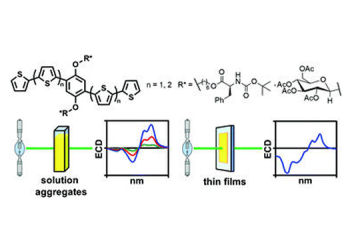 During these first months of 2021 I have published two papers concerning my previous research activities started at the University of Bari Aldo Moro. Among my specializations, I am expert in the synthesis and characterization of conjugated materials based on arylenethienylene structures. The first of these studies describes the preparation and characterization of diketopyrrolopyrrole (DPP) and thiophene -based oligomers, decorated with -SAc groups. This work is the natural evolution of my PhD thesis, that was centered on the preparation of thiol oligoarylenes for molecular electronics.
During these first months of 2021 I have published two papers concerning my previous research activities started at the University of Bari Aldo Moro. Among my specializations, I am expert in the synthesis and characterization of conjugated materials based on arylenethienylene structures. The first of these studies describes the preparation and characterization of diketopyrrolopyrrole (DPP) and thiophene -based oligomers, decorated with -SAc groups. This work is the natural evolution of my PhD thesis, that was centered on the preparation of thiol oligoarylenes for molecular electronics.
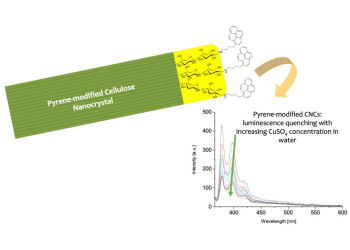 The reductive amination reaction is an interesting tool to achieve one terminus functionalization of cellulose nanocrystals. Since at NanoLeaves laboratory we are interested in novel applications of CNCs, we have used pyrene luminescence to understand if the new functionality introduced on CNCs may interact preferentially with some metal cations. In our work we compare the behavior of reductively aminated CNCs deriving from sulfuric acid hydrolysis or hydrochloric acid hydrolysis (that we named neutral CNC, N_CNC). Pyrene luminescence in water is used as a probe to understand if some selective or preferential interaction with metal cation achieves involving the pyrene portion of the nanocrystals.
The reductive amination reaction is an interesting tool to achieve one terminus functionalization of cellulose nanocrystals. Since at NanoLeaves laboratory we are interested in novel applications of CNCs, we have used pyrene luminescence to understand if the new functionality introduced on CNCs may interact preferentially with some metal cations. In our work we compare the behavior of reductively aminated CNCs deriving from sulfuric acid hydrolysis or hydrochloric acid hydrolysis (that we named neutral CNC, N_CNC). Pyrene luminescence in water is used as a probe to understand if some selective or preferential interaction with metal cation achieves involving the pyrene portion of the nanocrystals.
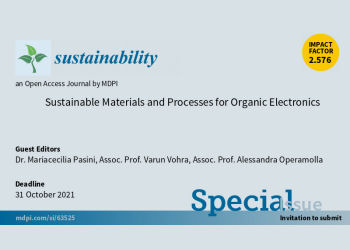 Dr. Mariacecilia Pasini, Prof. Varun Vhora and Prof. Alessandra Operamolla are the Guest Editors of the special Issue entitled “Sustainable Materials and Processes for Organic Electronics” proposed for the journal Sustainability (Publisher MDPI) with deadline October 21st 2021. The special issue will put chief attention to sustainable materials, processes, energy production and devices linked to the world of thin film organic and non organic electronics. The issue represents a nice opportunity to collect contributions by researchers from all over the world, showing the current trends of the topic.
Dr. Mariacecilia Pasini, Prof. Varun Vhora and Prof. Alessandra Operamolla are the Guest Editors of the special Issue entitled “Sustainable Materials and Processes for Organic Electronics” proposed for the journal Sustainability (Publisher MDPI) with deadline October 21st 2021. The special issue will put chief attention to sustainable materials, processes, energy production and devices linked to the world of thin film organic and non organic electronics. The issue represents a nice opportunity to collect contributions by researchers from all over the world, showing the current trends of the topic.
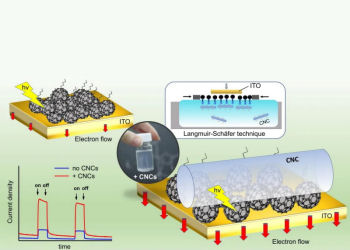 A new paper, released in 2021, collects our results on the electrochemical and physico-chemical investigation performed on Langmuir-Shaefer co-deposited films of sulfated cellulose nanocrystals and fulleropyrrolidines (FP). The work is done in collaboration between the University of Pisa, the University of Salento and the University of Trieste, and extends the results and the comprehension on these exciting new hybrid films, previously presented for the first time on the journal Carbon in 2020 by the same group of investigators.
A new paper, released in 2021, collects our results on the electrochemical and physico-chemical investigation performed on Langmuir-Shaefer co-deposited films of sulfated cellulose nanocrystals and fulleropyrrolidines (FP). The work is done in collaboration between the University of Pisa, the University of Salento and the University of Trieste, and extends the results and the comprehension on these exciting new hybrid films, previously presented for the first time on the journal Carbon in 2020 by the same group of investigators.
 Last November 21st 2020, I was invited by the Alumni group of Prof. Sabu Thomas from Mahatma Gandhi University (MGU), Kottayam, Kerala, India to participate in a global party to celebrate the brilliant career of Prof. Thomas and his 60th anniversary. Prof. Sabu Thomas is presently Vice Cancellor of the Mahatma Gandhi University in India and is a researcher whose achievements have had and will have a great impact on the scientific community, especially in the fields of materials and polymers chemistry and of nanotechnology.
Last November 21st 2020, I was invited by the Alumni group of Prof. Sabu Thomas from Mahatma Gandhi University (MGU), Kottayam, Kerala, India to participate in a global party to celebrate the brilliant career of Prof. Thomas and his 60th anniversary. Prof. Sabu Thomas is presently Vice Cancellor of the Mahatma Gandhi University in India and is a researcher whose achievements have had and will have a great impact on the scientific community, especially in the fields of materials and polymers chemistry and of nanotechnology.
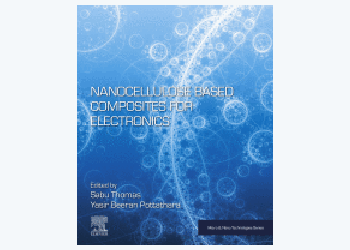 A contribution from the NanoLeaves Lab has been included as Chapter 3, entitled “Nanocellulosed-base functional paper” in the book “Nanocellulose Based Composites for Electronics”, published on October 9th 2020 by Elsevier.
A contribution from the NanoLeaves Lab has been included as Chapter 3, entitled “Nanocellulosed-base functional paper” in the book “Nanocellulose Based Composites for Electronics”, published on October 9th 2020 by Elsevier.
 What are the potentialities of nanocelluloses exploitation? And how far are we from their entrance into the global market? Innovative enterprises are already on the market with pilot production of various forms of nanocellulose materials. The following worldwide known companies have already started to produce various forms of nanocellulose, including NFC (nanofibrillated cellulose), MFC (microfibrillated cellulose) and CNC (cellulose nanocrystals):
What are the potentialities of nanocelluloses exploitation? And how far are we from their entrance into the global market? Innovative enterprises are already on the market with pilot production of various forms of nanocellulose materials. The following worldwide known companies have already started to produce various forms of nanocellulose, including NFC (nanofibrillated cellulose), MFC (microfibrillated cellulose) and CNC (cellulose nanocrystals):
NANOLEAVES - Research Group at the Department of Chemistry of the University of Pisa
Via Giuseppe Moruzzi, 13 - 56124 Pisa, Italy
Admin LogIn/LogOut | Privacy Policy![]()
